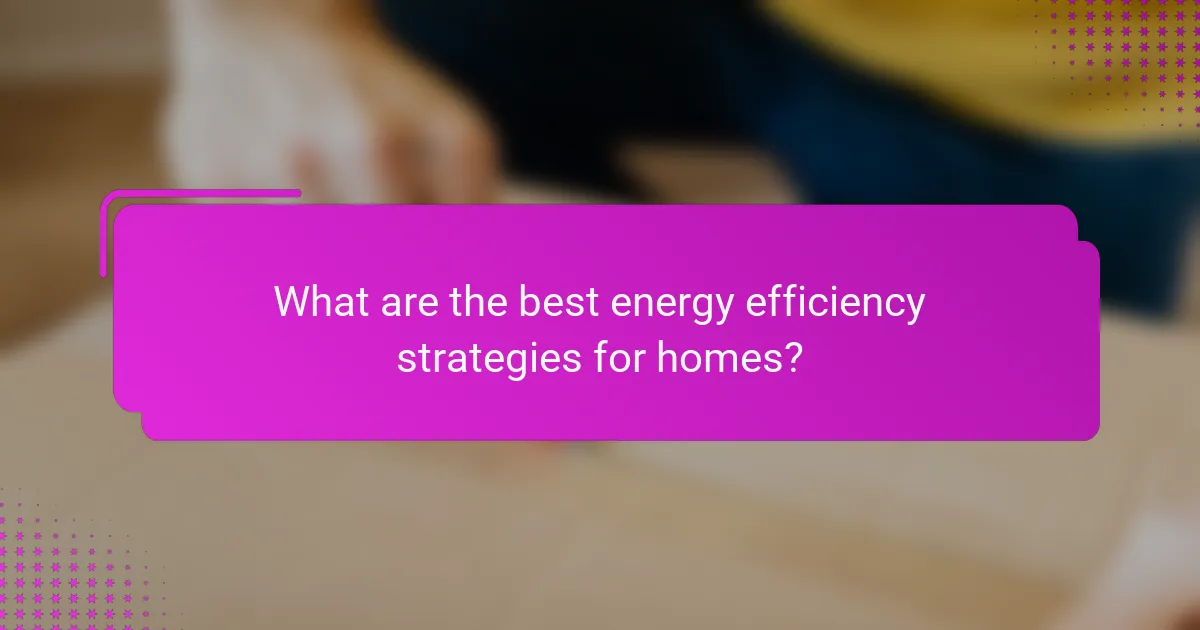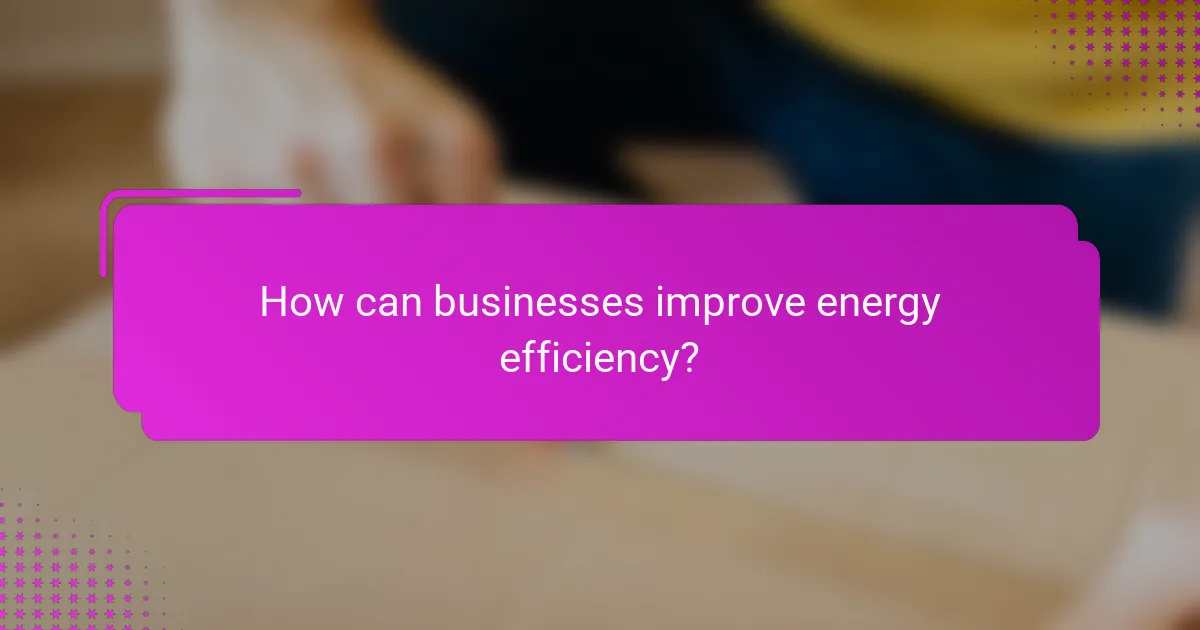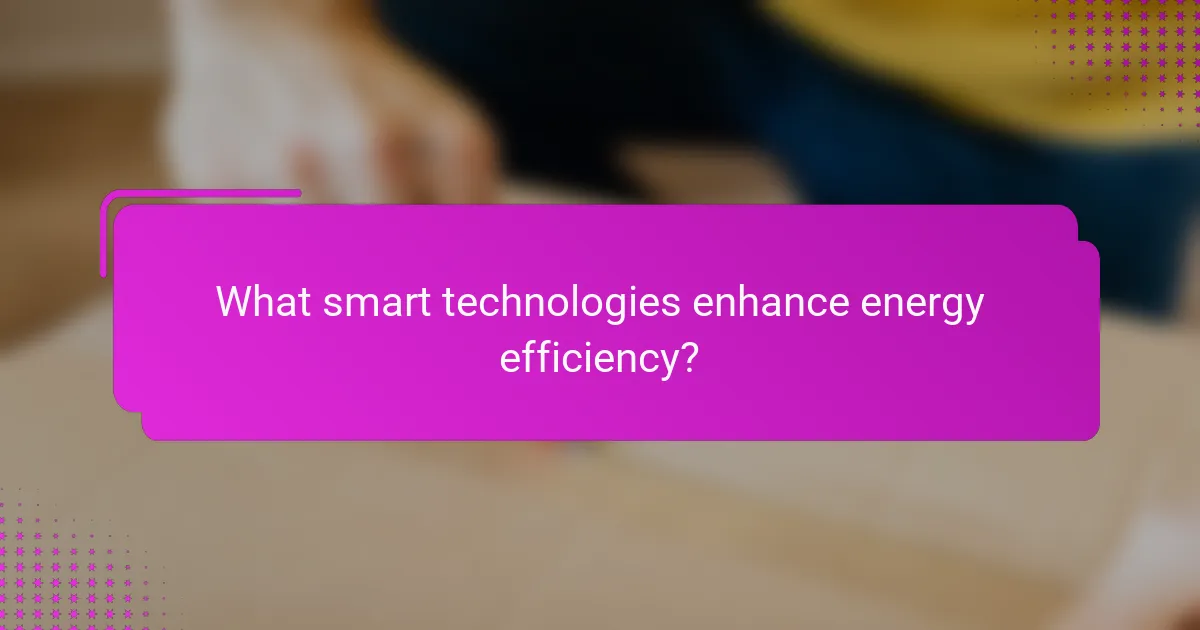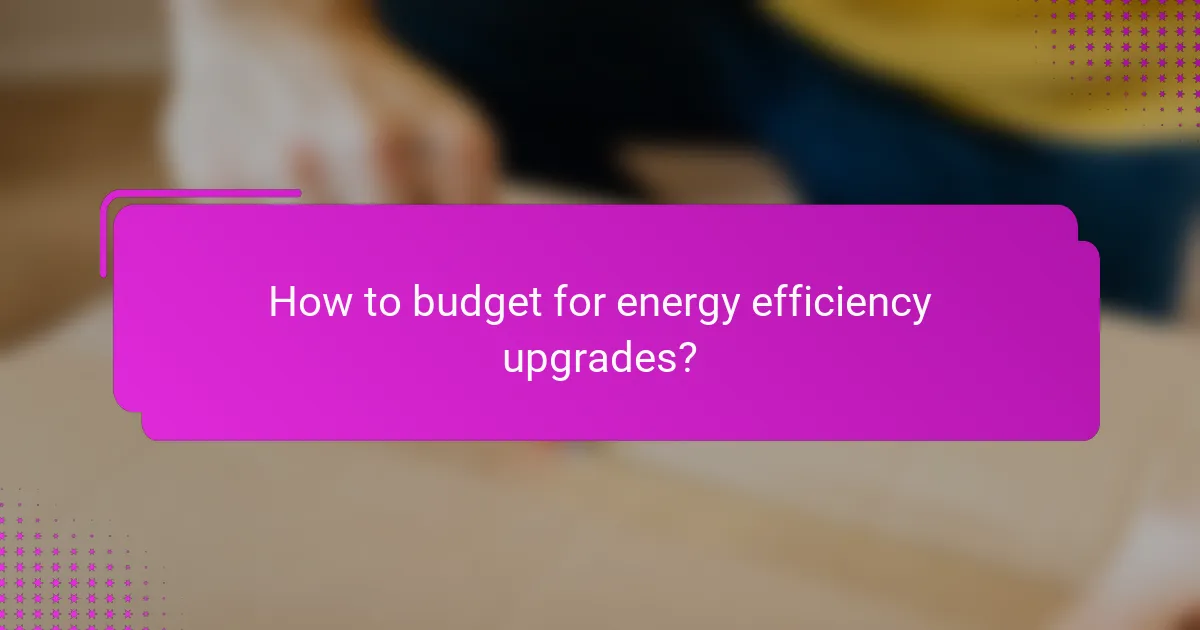Implementing effective energy efficiency strategies is essential for both homes and businesses looking to reduce consumption and save on utility costs. Proven methods such as improving insulation, using energy-efficient appliances, and installing smart technologies can lead to significant long-term savings. By adopting these strategies, individuals and organizations can optimize resource use and contribute to a more sustainable future.

What are the best energy efficiency strategies for homes?
The best energy efficiency strategies for homes include improving insulation, using energy-efficient appliances, installing smart thermostats, upgrading to LED lighting, and considering solar panel installation. These methods not only reduce energy consumption but can also lead to significant savings on utility bills over time.
Home insulation improvements
Improving home insulation is crucial for maintaining a comfortable indoor temperature and reducing energy costs. Effective insulation minimizes heat loss in winter and keeps homes cooler in summer, which can lead to energy savings of 10-50% depending on the current insulation quality.
Consider upgrading insulation in attics, walls, and basements. Materials like fiberglass, foam board, and spray foam are common choices. Ensure that insulation meets local building codes and energy efficiency standards to maximize benefits.
Energy-efficient appliances
Energy-efficient appliances use less electricity and water compared to standard models, making them a smart investment for homeowners. Look for appliances with the ENERGY STAR label, which signifies compliance with energy efficiency guidelines set by the U.S. Environmental Protection Agency.
When replacing appliances, consider the long-term savings on utility bills. For example, energy-efficient refrigerators can save around $200 over their lifespan compared to older models. Prioritize replacing the oldest and least efficient appliances first for the greatest impact.
Smart thermostats
Smart thermostats allow homeowners to optimize heating and cooling schedules based on their habits, leading to energy savings of 10-15%. These devices can be controlled remotely via smartphone apps, enabling adjustments even when away from home.
When selecting a smart thermostat, look for features like learning capabilities, geofencing, and energy usage reports. Proper installation and programming are essential to maximize efficiency, so consider professional assistance if needed.
LED lighting upgrades
Upgrading to LED lighting is one of the simplest ways to improve energy efficiency in a home. LED bulbs use up to 80% less energy than traditional incandescent bulbs and have a much longer lifespan, often lasting over 25,000 hours.
When replacing bulbs, consider the brightness (measured in lumens) and color temperature (measured in Kelvin) to match your preferences. Switching to LED lighting can significantly reduce electricity costs, making it a cost-effective upgrade.
Solar panel installation
Installing solar panels can dramatically reduce electricity bills and increase a home’s energy independence. Depending on the system size and local sunlight conditions, homeowners can offset a significant portion of their energy use, often achieving savings of 50% or more on monthly bills.
Before installation, evaluate the roof’s orientation, shading, and structural integrity. Research local incentives, tax credits, and financing options to make solar more affordable. Consulting with a reputable solar provider can help determine the best system for your needs and budget.

How can businesses improve energy efficiency?
Businesses can enhance energy efficiency by implementing targeted strategies that reduce consumption and optimize resource use. Key methods include conducting energy audits, utilizing building automation systems, upgrading HVAC systems, and investing in employee training programs.
Energy audits
Energy audits are systematic evaluations of energy use within a business, identifying areas for improvement. They typically involve analyzing energy bills, inspecting equipment, and assessing operational practices.
Businesses should consider hiring certified professionals to conduct these audits, as they can provide detailed reports and actionable recommendations. Regular audits, ideally annually, can help track progress and uncover new opportunities for savings.
Building automation systems
Building automation systems (BAS) control and monitor a building’s mechanical and electrical equipment, such as lighting, heating, and ventilation. By automating these systems, businesses can significantly reduce energy waste and improve operational efficiency.
Investing in a BAS can lead to energy savings of 10-30%, depending on the existing infrastructure. It’s essential to ensure that the system is user-friendly and that staff are trained to utilize its features effectively.
High-efficiency HVAC systems
Upgrading to high-efficiency HVAC systems can drastically lower energy consumption and costs. These systems use advanced technology to provide better climate control while consuming less energy compared to traditional units.
When selecting an HVAC system, look for units with high Seasonal Energy Efficiency Ratio (SEER) ratings. Additionally, consider regular maintenance to ensure optimal performance and longevity of the system.
Employee training programs
Implementing employee training programs focused on energy efficiency can foster a culture of sustainability within the organization. Training can cover best practices for energy use, such as turning off lights and equipment when not in use.
Consider conducting workshops or providing online resources to educate staff about the impact of their actions on energy consumption. Engaging employees in energy-saving initiatives can lead to significant reductions in overall usage and costs.

What smart technologies enhance energy efficiency?
Smart technologies significantly improve energy efficiency by optimizing energy usage and providing real-time data. These innovations help consumers and businesses reduce waste, lower costs, and make informed decisions about energy consumption.
Smart meters
Smart meters are advanced devices that provide real-time data on energy consumption, allowing users to monitor their usage patterns. By offering detailed insights, they help identify peak usage times and potential savings opportunities. Many utility companies offer incentives for customers who install smart meters, making them a cost-effective choice.
When using smart meters, consider setting alerts for high usage periods to manage consumption effectively. This proactive approach can lead to significant savings on monthly energy bills.
IoT energy management systems
Internet of Things (IoT) energy management systems integrate various devices and sensors to monitor and control energy use across a facility. These systems can automate adjustments based on real-time data, optimizing energy efficiency without manual intervention. They are particularly beneficial for larger buildings or industrial settings where energy consumption can be complex.
Investing in an IoT energy management system can lead to reductions in energy costs of 10-30% depending on the scale and implementation. Ensure compatibility with existing infrastructure to maximize benefits.
Automated lighting controls
Automated lighting controls adjust lighting levels based on occupancy and natural light availability, significantly reducing energy waste. These systems can include motion sensors, timers, and daylight sensors, allowing for dynamic lighting adjustments throughout the day.
Implementing automated lighting controls can lead to energy savings of 20-50%. Consider using LED fixtures with these controls for even greater efficiency, as they consume less energy and have a longer lifespan compared to traditional bulbs.

How to budget for energy efficiency upgrades?
Budgeting for energy efficiency upgrades involves assessing potential costs against expected savings. Start by determining your current energy usage and identifying areas for improvement, then estimate the costs of upgrades and the financial benefits they may yield over time.
Cost-benefit analysis
A cost-benefit analysis helps you evaluate the financial viability of energy efficiency upgrades. Begin by calculating the total costs of the upgrades, including materials, labor, and any potential disruptions. Next, estimate the savings on your energy bills, factoring in local energy rates and expected usage reductions.
Consider using a simple formula: divide the total costs by the annual savings to find the payback period. A payback period of less than five years is generally considered favorable, as it indicates a quicker return on your investment.
Incentives and rebates
Many governments and utility companies offer incentives and rebates to encourage energy efficiency upgrades. Research available programs in your area, as these can significantly reduce upfront costs. For instance, some states in the U.S. provide tax credits for energy-efficient appliances or home improvements.
Check with local utility providers for rebate programs related to insulation, HVAC systems, or energy-efficient windows. These incentives can often cover a substantial portion of the upgrade costs, making it easier to stay within your budget.
Financing options
Financing options can help spread the cost of energy efficiency upgrades over time. Look into low-interest loans specifically designed for energy improvements, which may offer favorable terms compared to traditional loans. Some programs allow you to pay for upgrades through your utility bill, making it more manageable.
Additionally, consider energy performance contracts, where a third party finances the upgrades and is repaid through the energy savings generated. This can be an effective way to implement significant upgrades without a large initial investment.


